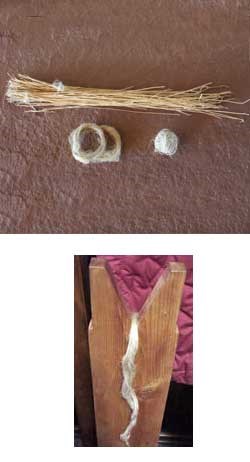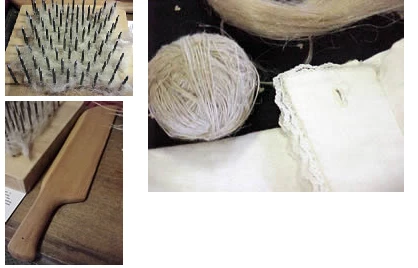
What: Cultivated since prehistoric times flax was planted from seed, then processed to create linen thread. Once the flax was mature, it was hand harvested by pulling the plant up by the roots. The stalks were tied in bundles to dry. To separate the fibers from the woody parts of the stalks, the plants were retted or soaked, either by spreading them on the grass and leaving them in the rain and dew for a period, or by standing them in slow moving water -- a pond or stream. After drying again, the stems were broken in a flax brake (flailing a wooden knife against a wooden block). This was called scutching. The wooden knife and block are pictured to the left. From there, the fibers went through hackling (drawing the bundles of fibers through successively finer sets of very sharp steel teeth set in a heavy block) to comb and align the long fibers. The beautiful, long lustrous fibers were then ready for spinning by drop spindle or spinning wheel. The spun thread was either woven into linen fabric or used in other needlecrafts. Besides the linen, flax seed could be pressed for the oil to make linseed oil used in paints and inks. Who: The pioneers grew flax to make linen. Flax has been grown for thousands of years to use for clothing. It is still in use today. | ||

| ||
Last updated: February 24, 2015
